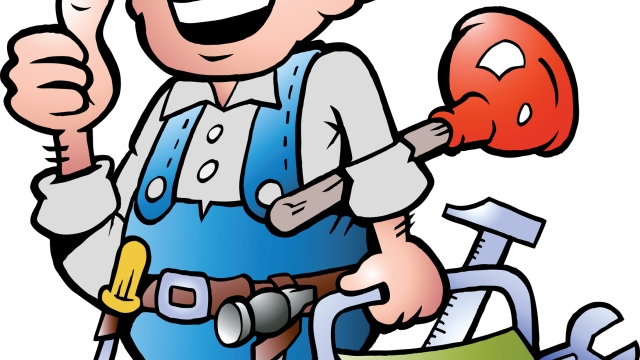
The Pipes That Keep It Flowing: Unveiling the Secrets of Plumbing
Plumbing, a crucial aspect of our everyday lives, often goes unnoticed and underappreciated. From our morning showers to our evening dishes, we rely on this intricate system of pipes and fixtures to bring clean water in and whisk away our waste. Whether in residential or commercial spaces, the importance of plumbing cannot be overstated. But have you ever wondered about the secrets that lie behind the walls and beneath the floors? In this plumbing guide, we will delve into the world of plumbing, unveiling its hidden wonders and shedding light on the essential role it plays in keeping things flowing smoothly. So, let’s roll up our sleeves and embark on a journey to discover the inner workings of our plumbing systems.
Types of Plumbing Systems
Plumbing systems are essential for the proper functioning of any building, ensuring the smooth flow of water and waste. There are several types of plumbing systems commonly used today, each with its unique characteristics and applications. In this section, we will explore three main types of plumbing systems: supply, drainage, and vent.
Supply plumbing systems are responsible for delivering clean and safe water to various fixtures throughout a building. This system typically consists of a network of pipes, valves, and fixtures that ensure the continuous supply of freshwater. It is crucial to have a reliable supply plumbing system to meet the daily demands of water usage, such as for drinking, bathing, and cleaning.
Drainage plumbing systems, on the other hand, focus on effectively removing wastewater and sewage from the building. These systems utilize gravity and pressure to transport waste from fixtures to the main sewer lines or septic tanks. Properly designed drainage plumbing systems prevent blockages and ensure the hygienic disposal of waste, preventing potential health hazards and unpleasant odors.
Vent plumbing systems play a vital role in maintaining the balance and pressure within the plumbing system. They allow air to enter the pipes, preventing the formation of vacuum and allowing wastewater to flow smoothly. Without proper venting, drainage systems may experience issues such as gurgling or slow draining. Vent plumbing systems also help control odors by allowing them to escape outside instead of lingering in the building.
Understanding the different types of plumbing systems is essential for homeowners and professionals alike. Whether you are building a new home or renovating an existing one, having a reliable and efficient plumbing system is paramount. By considering the specific requirements of supply, drainage, and vent systems, you can ensure the proper functioning and longevity of your plumbing infrastructure.
Components of a Plumbing System
Plumbing is a crucial part of every building, ensuring that clean water flows in and wastewater is carried away. A plumbing system consists of various components that work together to provide a reliable and efficient water supply and drainage. Let’s take a closer look at the key elements that make up a plumbing system.
Water Supply Lines: The water supply lines are responsible for bringing clean, potable water to the building. These lines are usually made of copper, PVC (polyvinyl chloride), or PEX (cross-linked polyethylene) pipes. They connect to the main water source, such as a municipal water line or a well, and distribute water throughout the building.
Fixtures and Faucets: Fixtures and faucets are the visible parts of a plumbing system that we interact with daily. These include sinks, toilets, showers, bathtubs, and various types of faucets. Fixtures are connected to the water supply lines, and faucets control the flow of water from the supply lines to these fixtures.
Drainage System: The drainage system is responsible for removing wastewater from the building. It includes a network of pipes that connect to the various fixtures and carry away used water, sewage, and other waste materials. Gravity plays a vital role in the drainage system, allowing wastewater to flow downward towards the main sewer line or septic tank.
Understanding the components of a plumbing system helps us appreciate the complexity and importance of this essential infrastructure. From the water supply lines to the fixtures and drainage system, each component plays a crucial role in ensuring our daily water needs are met and wastewater is effectively managed.

Common Plumbing Problems
Leaky Faucets:
One of the most common plumbing issues people face is a leaky faucet. This problem is not only annoying with the constant drip-drip sound, but it can also waste a significant amount of water over time. Leaky faucets are often caused by worn-out seals or faulty cartridges. It’s best to address this issue promptly to conserve water and prevent further damage to the fixture.Clogged Drains:
Plumbing Service Directory
Dealing with a clogged drain is a common headache for many homeowners. Whether it’s due to hair, grease, or foreign objects, a clog can disrupt the smooth flow of water through your pipes. To remedy this problem, you can try using a plunger or a drain snake to unclog the drain. Regularly cleaning your drains can help prevent future clogs and maintain optimal plumbing functionality.Running Toilets:
A running toilet is not just a nuisance; it can also lead to a significant increase in your water bill. This problem is usually caused by a faulty flapper valve or a malfunctioning fill valve. It’s important to address a running toilet promptly to conserve water and prevent any potential water damage. In some cases, simple adjustments or replacement of the malfunctioning parts can fix the issue.
Keep in mind that these are just a few examples of common plumbing problems that many individuals face. If you encounter any plumbing issues beyond your expertise, it’s always advisable to seek help from a professional plumber to prevent further damage and ensure a proper resolution.

